Potřebujeme váš souhlas k využití jednotlivých dat, aby se vám mimo jiné mohly ukazovat informace týkající se vašich zájmů. Souhlas udělíte kliknutím na tlačítko „OK“.
ASTM E691-14
Standard Practice for Conducting an Interlaboratory Study to Determine the Precision of a Test Method
Automaticky přeložený název:
Standardní praktiky pro Vedení mezilaboratorní studii s cílem ověřit přesnost zkušební metody
NORMA vydána dne 1.4.2014
Informace o normě:
Označení normy: ASTM E691-14
Poznámka: NEPLATNÁ
Datum vydání normy: 1.4.2014
Kód zboží: NS-47679
Počet stran: 21
Přibližná hmotnost: 63 g (0.14 liber)
Země: Americká technická norma
Kategorie: Technické normy ASTM
Kategorie - podobné normy:
Anotace textu normy ASTM E691-14 :
Keywords:
precision, repeatability, reproducibility, repeatability limit, reproducibility limit, ICS Number Code 19.020 (Test conditions and procedures in general)
Doplňující informace
| Significance and Use | ||||||||||||||||||||||||||||||||||||||||||||||||||||||||||||||||||||||||||||||||||||||||||||
|
5.1 ASTM regulations require precision statements in all test methods in terms of repeatability and reproducibility. This practice may be used in obtaining the needed information as simply as possible. This information may then be used to prepare a precision statement in accordance with Practice E177. 5.2 Test Method and Protocol—In this practice, the term “test method” is used both for the actual measurement process and for the written description of the process, while the term “protocol” is used for the directions given to the laboratories for conducting the ILS. 5.3 Observations, Test Determinations and Test Results: 5.3.1 A test method often has three distinct stages, the direct observation of dimensions or properties, the arithmetic combination of the observed values to obtain a test determination, and the arithmetic combination of a number of test determinations to obtain the test result of the test method. In the simplest of test methods a single direct observation is both the test determination and the test result. For example, the test method may require the measurement of the mass of a test specimen prepared in a prescribed way. Another test method may require the measurement of the area of the test specimen as well as the mass, and then direct that the mass be divided by the area to obtain the mass per unit area of the specimen. The whole process of measuring the mass and the area and calculating the mass per unit area is a test determination. If the test method specifies that only one test determination is to be made, then the test determination value is the test result of the test method. Some test methods require that several determinations be made and the values obtained be averaged or otherwise combined to obtain the test result of the test method. Averaging of several determinations is often used to reduce the effect of local variations of the property within the material. 5.3.2 In this practice, the term “test determination” is used both for the process and for the value obtained by the process, except when “test determination value” is needed for clarity. 5.3.3 The number of test determinations required for a test result should be specified in each individual test method. The number of test results required for an interlaboratory study of a test method is specified in the protocol of that study. 5.4 Test Specimens and Test Units—In this practice a test unit is the total quantity of material needed for obtaining a test result as specified by the test method. The portion of the test unit needed for obtaining a single test determination is called a test specimen. Usually a separate test specimen is required for each test determination. 5.5 Precision, Bias, and Accuracy of a Test Method: 5.5.1 When a test method is applied to a large number of portions of a material, that are as nearly alike as possible, the test results obtained nevertheless will not all have the same value. A measure of the degree of agreement among these test results describes the precision of the test method for that material. 5.5.2 Numerical measures of the variability between such test results provide inverse measures of the precision of the test method. Greater variability implies smaller (that is, poorer) precision and larger imprecision. 5.5.3 This practice is designed only to estimate the precision of a test method. However, when accepted reference values are available for the property levels, the test result data obtained according to this practice may be used in estimating the bias of the test method. For a discussion of bias estimation and the relationships between precision, bias, and accuracy, see Practice E177. 5.6 Repeatability and Reproducibility—These terms deal with the variability of test results obtained under specified laboratory conditions. Repeatability concerns the variability between independent test results obtained within a single laboratory in the shortest practical period of time by a single operator with a specific set of test apparatus using test specimens (or test units) taken at random from a single quantity of homogeneous material obtained or prepared for the ILS. Reproducibility deals with the variability between single test results obtained in different laboratories, each of which has applied the test method to test specimens (or test units) taken at random from a single quantity of homogeneous material obtained or prepared for the ILS. 5.6.1 Repeatability Conditions—The within-laboratory conditions specified above for repeatability. The single-operator, single-set-of-apparatus requirement means that for a particular step in the measurement process the same combination of operator and apparatus is used for every test result and on every material. Thus, one operator may prepare the test specimens, a second measure the dimensions and a third measure the breaking force. “Shortest practical period of time” means that the test results, at least for one material, are obtained in a time not less than in normal testing and not so long as to permit significant changes in test material, equipment or environment. |
||||||||||||||||||||||||||||||||||||||||||||||||||||||||||||||||||||||||||||||||||||||||||||
| 1. Scope | ||||||||||||||||||||||||||||||||||||||||||||||||||||||||||||||||||||||||||||||||||||||||||||
|
1.1 This practice describes the techniques for planning, conducting, analyzing, and treating the results of an interlaboratory study (ILS) of a test method. The statistical techniques described in this practice provide adequate information for formulating the precision statement of a test method. 1.2 This practice does not concern itself with the development of test methods but rather with gathering the information needed for a test method precision statement after the development stage has been successfully completed. The data obtained in the interlaboratory study may indicate, however, that further effort is needed to improve the test method. 1.3 Since the primary purpose of this practice is the development of the information needed for a precision statement, the experimental design in this practice may not be optimum for evaluating materials, apparatus, or individual laboratories. 1.4 Field of Application—This practice is concerned exclusively with test methods which yield a single numerical figure as the test result, although the single figure may be the outcome of a calculation from a set of measurements. 1.4.1 This practice does not cover methods in which the measurement is a categorization; however, for many practical purposes categorical outcomes can be scored, such as zero-one scoring for binary measurements or as integers, ranks for example, for well-ordered categories and then the test result can be defined as an average, or other summary statistic, of several individual scores. 1.5 The information in this practice is arranged as follows:
1.6 This standard may involve hazardous materials, operations, and equipment. This standard does not purport to address all of the safety problems associated with its use. It is the responsibility of the user of this standard to establish appropriate safety and health practices and determine the applicability of regulatory limitations prior to use. |
||||||||||||||||||||||||||||||||||||||||||||||||||||||||||||||||||||||||||||||||||||||||||||
| 2. Referenced Documents | ||||||||||||||||||||||||||||||||||||||||||||||||||||||||||||||||||||||||||||||||||||||||||||
|
Podobné normy:
Historická
1.12.2009
Historická
15.6.2013
Historická
1.6.2012
Historická
1.10.2013
Historická
1.2.2014
Historická
1.9.2011
Doporučujeme:
Aktualizace technických norem
Chcete mít jistotu, že používáte pouze platné technické normy?
Nabízíme Vám řešení, které Vám zajistí měsíční přehled o aktuálnosti norem, které používáte.
Chcete vědět více informací? Podívejte se na tuto stránku.


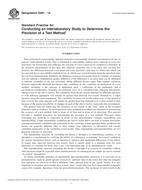
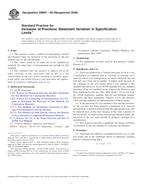 ASTM D6607-00(2009)..
ASTM D6607-00(2009)..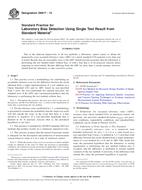 ASTM D6617-13
ASTM D6617-13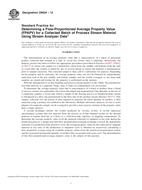 ASTM D6624-12
ASTM D6624-12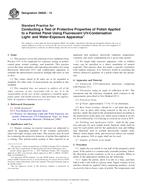 ASTM D6625-13
ASTM D6625-13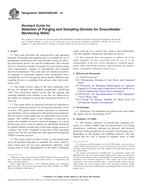 ASTM D6634/D6634M-14..
ASTM D6634/D6634M-14..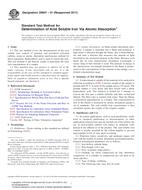 ASTM D6647-01(2011)..
ASTM D6647-01(2011)..
 Cookies
Cookies
